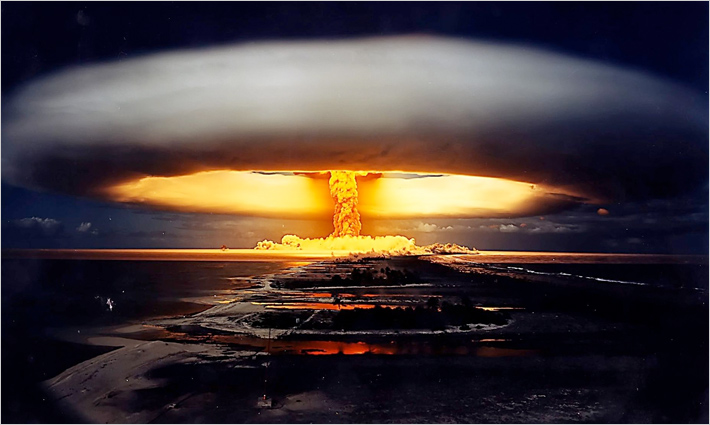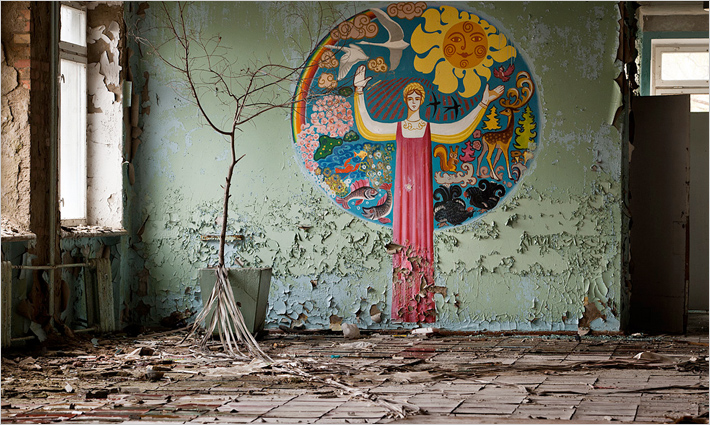How to prepare for a Nuclear Blast
 A nuclear blast is an explosion with intense light and heat, a damaging pressure wave, and widespread radioactive material that can contaminate the air, water, and ground surfaces for miles around. A nuclear device can range from a weapon carried by an intercontinental missile launched by a hostile nation or terrorist organization to a small portable nuclear device transported by an individual. All nuclear devices cause deadly effects when exploded, including blinding light, intense heat (thermal radiation), initial nuclear radiation, blast, fires started by the heat pulse, and secondary fires caused by the destruction. With the end of the Cold War, the possibility of a major nuclear exchange has diminished, however, the current tense geo-political climate (specifically hostilities with Iran, North Korea, and other countries with nuclear capabilities) poses a chance of a nuclear attack as these countries strive to develop more effective delivery systems. However, an even more likely threat is a terrorist attack as more terrorist organizations are actively trying to obtain access to a nuclear weapon on the black market. Called improvised nuclear devices (IND), these are generally smaller, less powerful weapons, but are still capable of devastating destruction. Hazards of Nuclear DevicesIf there were the threat of an attack, people living near potential targets could be advised to evacuate or they could decide on their own to evacuate to an area not considered a likely target. Protection from radioactive fallout would require taking shelter in an underground area or in the middle of a large building. In general, potential targets include:
The three factors for protecting oneself from radiation and fallout are distance, shielding, and time.
Remember that any protection, however temporary, is better than none at all, and the more shielding, distance, and time you can take advantage of, the better. Risks of Nuclear Devices The extent, nature and arrival time of these hazards are difficult to predict. The geographical dispersion of hazard effects will be defined by the following
Electromagnetic Pulse In addition to other effects, a nuclear weapon detonated in or above the earth’s atmosphere can create an electromagnetic pulse (EMP), a high-density electrical field. An EMP acts like a stroke of lightning but is stronger, faster, and shorter. An EMP can seriously damage electronic devices connected to power sources or antennas. This includes communication systems, computers, electrical appliances, and automobile or aircraft ignition systems. The damage could range from a minor interruption to actual burnout of components. Most electronic equipment within 1,000 miles of a high-altitude nuclear detonation could be affected. Battery-powered radios with short antennas generally would not be affected. Although an EMP is unlikely to harm most people, it could harm those with pacemakers or other implanted electronic devices. Radioactive Fallout The fallout from a nuclear explosion may be carried by wind currents for hundreds of miles if the right conditions exist. Effects from even a small portable device exploding at ground level can be potentially deadly. Nuclear radiation cannot be seen, smelled, or otherwise detected by normal senses. Radiation can only be detected by radiation monitoring devices. This makes radiological emergencies different from other types of emergencies, such as floods or hurricanes. Monitoring can project the fallout arrival times, which will be announced through official warning channels. However, any increase in surface build-up of gritty dust and dirt should be a warning for taking protective measures.  Before a Nuclear BlastWater Store at least one month’s supply of water. Following a nuclear explosion, clean drinking water may not be available. Your regular water source could be cut-off or compromised through contamination. A normally active person needs at least one gallon of water daily just for drinking however individual needs vary, depending on age, physical condition, activity, diet, and climate. Food Store at least one month’s supply of food. Choose salt-free crackers, whole grain cereals, and canned foods with high liquid content. In addition to these, it is highly recommended that you get some MREs (Meals, Ready to Eat), freeze-dried and dehydrated foods which are light, easy to transport, and last up to 25 years. Avoid foods that will make you thirsty. Keep in mind that an average adult consumes 2,000 to 3,000 calories a day. Emergency Kit A basic emergency kit should contain (at least) the following items:
Because you don’t know where you will be when a nuclear blast occurs, prepare a Disaster Supplies Kit for your home, workplace, and car. Besides your basic emergency items, below is a list of items specific to a nuclear radiation fallout:
Family Plan Your family may not be together when disaster strikes, so it is important to know how you will contact one another, how you will get back together, and what you will do in case of an emergency. Plan places where your family will meet, both within and outside of your immediate neighborhood. Know your community’s warning systems and disaster plans, including evacuation routes. Shelter Find out from officials if any public buildings in your community have been designated as fallout shelters. If none have been designated, make your own list of potential shelters near your home, workplace and school. These places would include basements or the windowless center area of middle floors in high-rise buildings, as well as subways and tunnels. Taking shelter during a nuclear blast is absolutely necessary. There are two kinds of shelters – blast and fallout. The following describes the two kinds of shelters:
 During a Nuclear BlastThe following are guidelines for what to do in the event of a nuclear explosion. If Indoors:
If Outside and unable to get inside immediately:
 After a Nuclear BlastDecay rates of the radioactive fallout are the same for any size nuclear device. However, the amount of fallout will vary based on the size of the device and its proximity to the ground. Therefore, it might be necessary for those in the areas with the highest radiation levels to shelter for up to a month. The heaviest fallout would be limited to the area at or downwind from the explosion and 80 percent of the fallout would occur during the first 24 hours. People in most of the areas that would be affected could be allowed to come out of the shelter within a few days and, if necessary, evacuate to unaffected areas. Returning To Your Home: Keep listening to the radio and television for news about what to do, where to go, and places to avoid. |